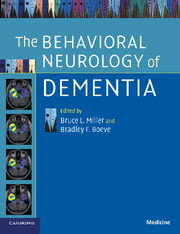Book contents
- Frontmatter
- Contents
- List of contributors
- Section 1 Introduction
- Section 2 Cognitive impairment, not demented
- Section 3 Slowly progressive dementias
- Section 4 Rapidly progressive dementias
- 23 Prion disorders and other rapidly progressive dementias
- 24 Delirium masquerading as dementia
- 25 Paraneoplastic disorders of the memory and cognition
- Index
- References
25 - Paraneoplastic disorders of the memory and cognition
Published online by Cambridge University Press: 31 July 2009
- Frontmatter
- Contents
- List of contributors
- Section 1 Introduction
- Section 2 Cognitive impairment, not demented
- Section 3 Slowly progressive dementias
- Section 4 Rapidly progressive dementias
- 23 Prion disorders and other rapidly progressive dementias
- 24 Delirium masquerading as dementia
- 25 Paraneoplastic disorders of the memory and cognition
- Index
- References
Summary
Introduction
Once considered rare, paraneoplastic disorders (PND) of the brain are becoming increasingly recognized as a cause of higher cortical dysfunction (cognition, memory, attention, affection and behavior) and disruption of sleep and level of consciousness (Gultekin et al.,2000; Ances et al., 2005). Symptoms may be limited to these cortical functions or develop in association with syndromes of the brainstem, cerebellum, dorsal root ganglia and peripheral nerves. Although the term PND can be applied to a number of non-metastatic neurologic complications of cancer, most PND are immune mediated and this chapter will focus on these disorders.
It has been suggested that approximately 1:10,000 cancer patients develop PND, although there are no data supporting such a low incidence (Darnell and Posner 2003). Our experience in a single institution suggests a higher frequency: closer to 1:500–1:1000 with an even higher incidence reported for particular cancer populations such as small cell lung cancer (SCLC, ∼5%) and thymoma (∼30%) (Elrington et al., 1991; Muller-Hermelink and Marx 2000). For PND affecting memory and cognition, the incidence can only be estimated for patients with paraneoplastic limbic encephalitis (PLE), at approximately 1:2000–1:3000.
Information
- Type
- Chapter
- Information
- The Behavioral Neurology of Dementia , pp. 377 - 394Publisher: Cambridge University PressPrint publication year: 2009
References
Accessibility standard: Unknown
- 2
- Cited by
